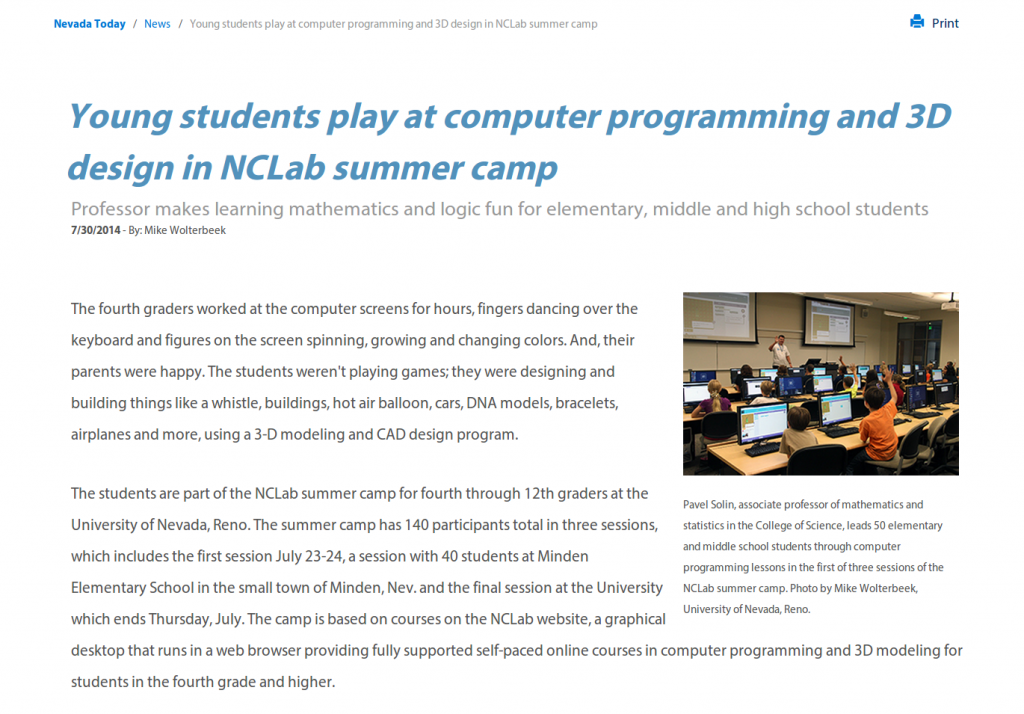Growing Demand The demand for Computer Programming and 3D Printing (CAD Modeling) instruction using NCLab is growing. While the NCLab Summer Camp 2013 had 50 students and was full, the NCLab Summer Camp 2014 had 150 students and there was still much more demand. Many parents have asked about instruction that we offer during the
NCLab Afterschool Programs Started at Five Schools in Reno









